The Simpsons predict the future - again - after scientists plan artificial solar eclipse
2025-07-11 IDOPRESS
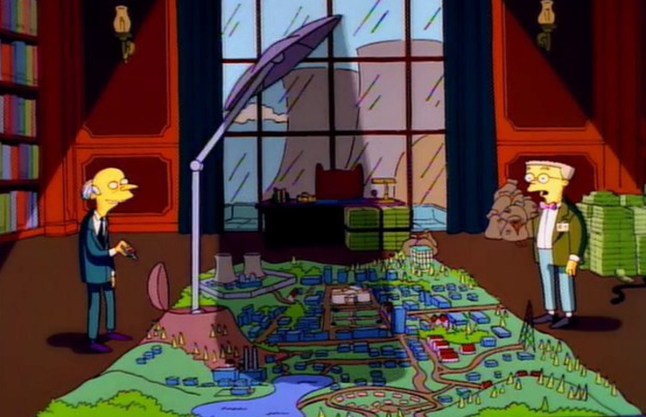
The Simpsons,Season 6,Episode 25,Who Shot Mr. Burns? (Part 1),sees the Sun blotted out by a massive metal disc (Picture: Fox)
‘Have you ever seen the Sun set at 3pm?’
This is what Mr Burns, the billionaire tyrant,asked the residents of Springfield in a 1996 episode of The Simpsons.
And soon,a group of scientists can say they have.
A UK-led space mission will see astronomers blot out the Sun by using a satellite,once again proving that The Simpsons can predict the future.
The Moon-Enabled Sun Occultation Mission (MESOM),unveiled yesterday at the Royal Astronomical Society’s National Astronomy Meeting,hopes that human-made solar eclipses will help us understand the Sun.
A small satellite will be blasted into a special orbit that allows it to align with the Moon’s shadow roughly once every lunar month,or 29.6 days.
What is a solar eclipse?
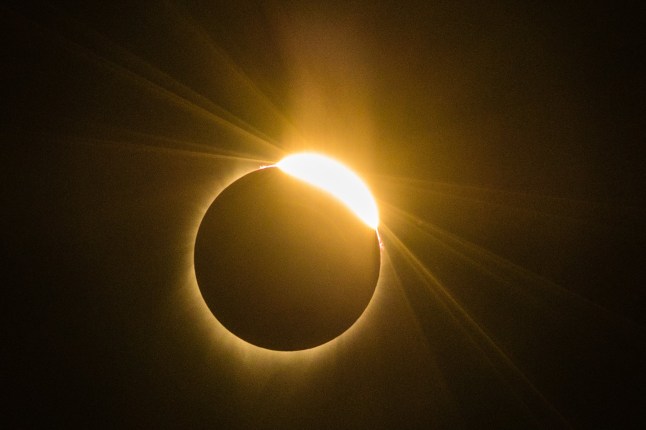
A total solar eclipse in Madras,Oregon,in 2017 (Picture: AFP)
Solar eclipses don’t sound like much – they happen when the Moon comes between us and the Sun.
But the sight of the silhouette of the Moon eating into the yellow orb of the Sun is a celestial marvel.
The Moon is about 400 times smaller than the Sun,but is 400 times closer to us – when the two align,they’re about the same size in the sky.
Sometimes only a small chunk of the Sun is obscured,leading to a partial solar eclipse. Earth can also elbow its way between the Sun and the Moon,which is called a lunar eclipse.
Total solar eclipses aren’t a common sight,occurring once every 18 months and can be as short as 10 seconds,according to the Royal Museums Greenwich.
But MESOM aims to create 80 of them,each nearly 50 minutes long,across two years.
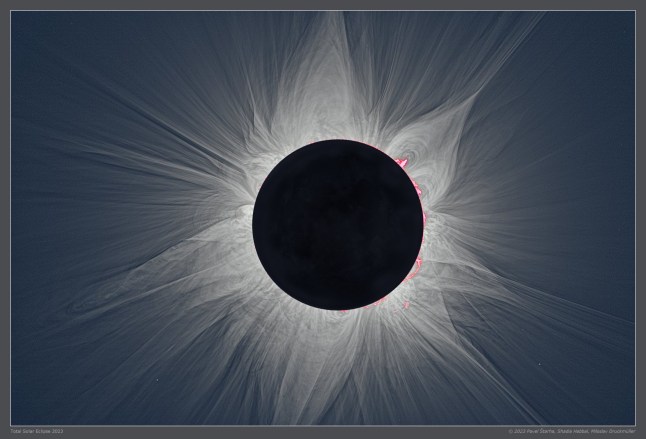
A total solar eclipse as viewed from Earth in 2023 (Picture: Royal Astronomical Society/Miloslav Druckmuller/Shadia Habbal/Pavel Starha
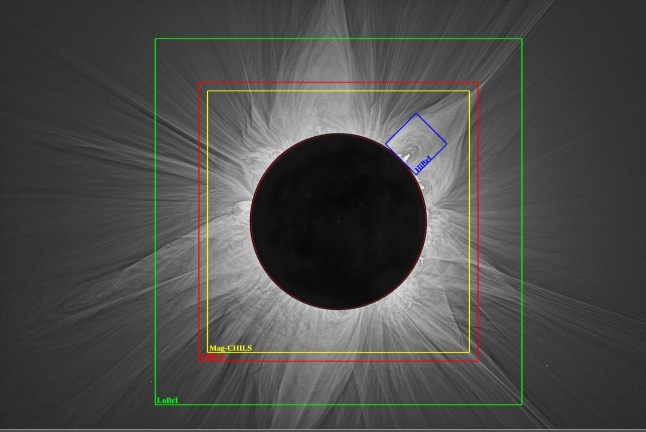
The same total solar eclipse with the fields of view of the MESOM instruments superimposed on top of it (Picture: Royal Astronomical Society/Miloslav Druckmuller/Shadia Habbal/Pavel Starha)
The artificial solar eclipse will recreate totality – the moment the Moon completely covers the Sun. During this,wispy white strings of light from the Sun’s atmosphere,or corona,are visible.
It’s these wisps that are of interest to scientists,with eclipses being one of the few times the innermost corona is visible.
But like children being told not to look at the Sun with the naked eye,scientists struggle to get a good look at the corona because of how bright the Sun is,Royal Observatory Greenwich astronomer Jake Foster told Metro.
‘We happen to be extremely lucky here on Earth that total solar eclipses occur,because in the brief few moments that the Moon completely blocks the Sun’s surface from view,we can see and study its atmosphere,known as the corona,’ he said.
To get around this,MESOM will observe the technologically blocked-out Sun from space. The orbital spacecraft will get up,close and personal with our star – it’ll be 56,000km close to the Sun.
The satellite has a high-resolution coronal imager,a very powerful camera,and a corona mass spectrometer that can track the plasma that the Sun spits out.
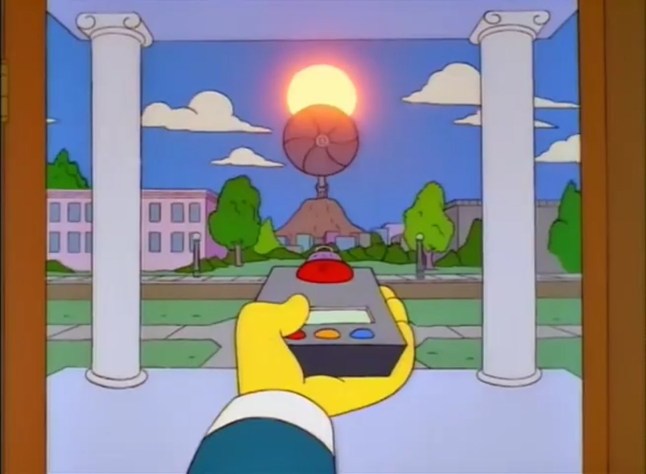
Just imagine a satellite instead (Picture: Fox)
They’ll also use a spectropolarimeter. While it sounds like something that can detect ghosts,the instrument can pick up sunspots,cool,dark spots of the Sun twisted by its magnetic field.
By doing so,the international researchers will be able to forecast space weather better,such as solar storms,the Sun’s energy smashing into the Earth,which can cause blackouts and power grid failures.
Foster said: ‘This could rapidly accelerate our chances to answer the big unsolved mysteries of the Sun,such as why its atmosphere (the corona) is so much hotter than its surface.
‘Also,the chance to study and better understand space weather caused by the Sun is invaluable,since its effects on the Earth’s electrical systems can be devastating if powerful enough.’
The MESOM team submitted their proposal to the European Space Agency’s F-class mission call in May. F-class missions are quick and easy projects – at least,in the world of multi-million pound world of space tech.
If given the green light,they expect to start work on MESOM as early as 2026.

